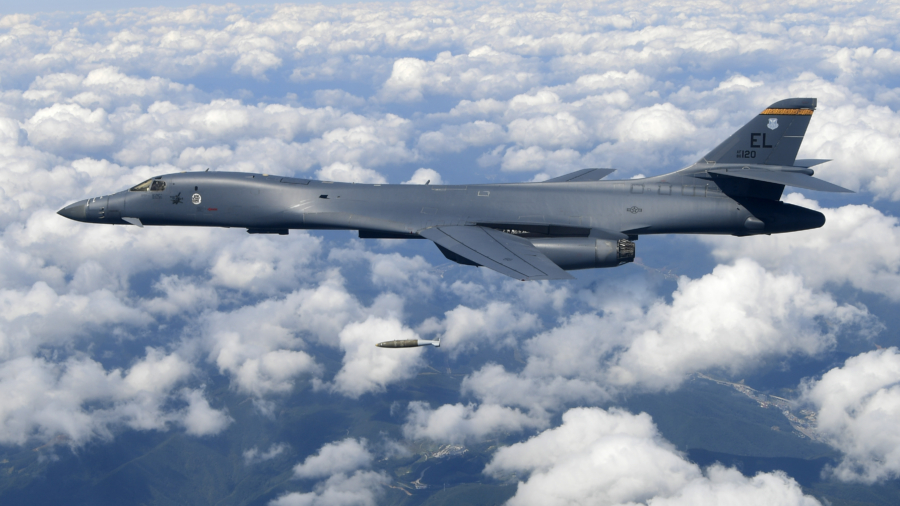WASHINGTON—U.S. Air Force B-1B Lancer bombers escorted by fighter jets flew in international airspace over waters east of North Korea on Saturday in a show of force the Pentagon said demonstrated the range of military options available to President Donald Trump.
The patrols came after officials and experts said a small earthquake near North Korea’s nuclear test site on Saturday was probably not man-made, easing fears Pyongyang had exploded another nuclear bomb just weeks after its last one.
The Pentagon said the mission was designed to show the many military options U.S. President Donald Trump had to deal with the grave threat presented by the North Korean nuclear program.
“This is the farthest north of the Demilitarized Zone (DMZ) any U.S. fighter or bomber aircraft have flown off North Korea’s coast in the 21st century, underscoring the seriousness with which we take (North Korea’s) reckless behavior,” said Pentagon spokeswoman Dana White.
Saturday’s seismic activity came just hours before North Korea’s Foreign Minister Ri Yong Ho – who warned on Thursday that North Korea could consider a hydrogen bomb test of an unprecedented scale over the Pacific – was due to address the United Nations General Assembly in New York.
Ri did not respond when asked by reporters whether North Korea had conducted a new nuclear test.

Hours earlier seismologists around the world had detected a small earthquake near North Korea’s nuclear test site. China’s Earthquake Administration said the quake was not a nuclear explosion and had the characteristics of a natural tremor. The administration had said earlier the magnitude 3.5 quake detected at 0829 GMT was a “suspected explosion”.
The CTBTO, or Comprehensive Test-Ban Treaty Organization, which monitors nuclear tests, and officials of the South Korean meteorological agency also said they believed it was a natural quake.
The Pentagon and the U.S. State Department did not immediately respond to requests for comment.
A U.S. intelligence official and U.S.-based non-governmental experts said their initial assessment was that the quake was either natural or connected to North Korea’s latest and largest nuclear test on Sept. 3, and not caused by a new nuclear test.
“It seems likely that these small tremors are related to the shifts in the ground due to the recent large test,” said David Wright of the Union of Concerned Scientists in the United States.
A U.S. government intelligence analyst said the events could have been a “mine-type” collapse of tunnels damaged by North Korea’s previous nuclear test, but was more likely a small earthquake.
An official of South Korea’s Meteorological Agency said acoustic waves should be detected in the event of a man-made earthquake.
“In this case we saw none. So as of now, we are categorizing this as a natural earthquake.”
The earthquake was detected 49 km from Kilju in North Hamgyong Province, where North Korea’s known Punggye-ri nuclear site is located, the official said.
All of North Korea’s six nuclear tests registered as earthquakes of magnitude 4.3 or above. The last test registered as a 6.3 magnitude quake.
Phil Stewart and David Brunnstrom

